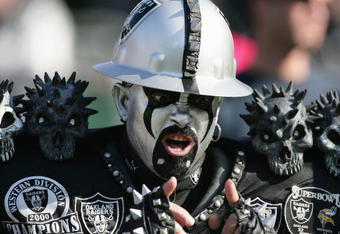 These Crates Would Be Totally Cool If They Contained Actual Items That Truly Represented The Music Genre Of Heavy Metal. Instead, We get To Be Rewarded By Luck Of The Draw With One Of These;
These Crates Would Be Totally Cool If They Contained Actual Items That Truly Represented The Music Genre Of Heavy Metal. Instead, We get To Be Rewarded By Luck Of The Draw With One Of These;
![Spiked Shoulder Guard [141/101]](https://zyngapv.hs.llnwd.net/e6/mwfb/graphics/item_spikedshoulderguard_01.png)

A Spiked Shoulder Guard – Really? What Is This Supposed To Represent? An Oakland Raiders Fan?
![Deathallica [101/141]](https://zyngapv.hs.llnwd.net/e6/mwfb/graphics/item_deathmaestro_01.png)

Deathallica – WTF Is It? Metallica It Is Not!
![Metal Monster [139/101]](https://zyngapv.hs.llnwd.net/e6/mwfb/graphics/item_metalmonster_01.png)

Metal Monster – This Is Better. At Least Is A Motor Cycle. Looks More Like The Motor Cycle From Ghost Rider.
![Dark Night [111/154]](https://zyngapv.hs.llnwd.net/e6/mwfb/graphics/item_darknight_01.png)
Dark Knight – Ok, At Least It’s Another Motor Cycle.
![Chrome Toed Boots [109/154]](https://zyngapv.hs.llnwd.net/e6/mwfb/graphics/item_chrometoedboots_01.png)
Chrome Toed Boots – Am I Missing Something?
![Hatchet Guitar [155/110]](https://zyngapv.hs.llnwd.net/e6/mwfb/graphics/item_hatchetguitar_01.png)
Hatchet Guitar – Now This Is More Like It. Cutting Edge.
![Alligator Snapping Turtle [169/121]](https://zyngapv.hs.llnwd.net/e6/mwfb/graphics/item_snappingturtle_02.png)
![]()
Alligator Snapping Turtle – Is There Such A Thing? The Answer Is Yes. Read About Them On Wikipedia.
So, What Does It Have To Do With Heavy Metal? On The Other Hand, What Does A Private Zoo Have To Do With A Mafia?
![Metalhead [120/170]](https://zyngapv.hs.llnwd.net/e6/mwfb/graphics/item_metalhead_01.png)
Metal Head – Um, No! Gene Simmons Wannabe! Maybe!
If You Want To Illustrate Heavy Metal Then You Must Understand Heavy Metal. For You Beginners, Here Are A Couple Of Exerts From Wikipedia;
Heavy metal (often referred to simply as metal) is a genre of rock music[1] that developed in the late 1960s and early 1970s, largely in the Midlands of the United Kingdom and the United States.[2] With roots in blues rock and psychedelic rock, the bands that created heavy metal developed a thick, massive sound, characterized by highly amplified distortion, extended guitar solos, emphatic beats, and overall loudness. Heavy metal lyrics and performance styles are generally associated with masculinity and machismo.[3]
The first heavy metal bands such as Led Zeppelin, Black Sabbath and Deep Purple attracted large audiences, though they were often critically reviled, a status common throughout the history of the genre. In the mid-1970s Judas Priest helped spur the genre's evolution by discarding much of its blues influence;[4] Motörhead introduced a punk rock sensibility and an increasing emphasis on speed. Bands in the New Wave of British Heavy Metal such as Iron Maiden followed in a similar vein. Before the end of the decade, heavy metal had attracted a worldwide following of fans known as "metalheads" or "headbangers".
In the 1980s, glam metal became a major commercial force with groups like Mötley Crüe and Poison. Underground scenes produced an array of more extreme, aggressive styles: thrash metal broke into the mainstream with bands such as Metallica, Megadeth, Slayer, and Anthrax, while other styles like death metal and black metal remain subcultural phenomena. Since the mid-1990s, popular styles such as nu metal, which often incorporates elements of grunge and hip hop; and metalcore, which blends extreme metal with hardcore punk, have further expanded the definition of the genre.
Image and fashion
Main article: Heavy metal fashion
Kiss performing in 2004, wearing their famous makeup
As with much popular music, visual imagery plays a large role in heavy metal. In addition to its sound and lyrics, a heavy metal band's "image" is expressed in album sleeve art, logos, stage sets, clothing, and music videos.[35] Some heavy metal acts such as Alice Cooper,Kiss, Lordi, Slipknot, and Gwar have become known as much for their outrageous performance personas and stage shows as for their music.
Down-the-back long hair, according to Weinstein, is the "most crucial distinguishing feature of metal fashion."[36] Originally adopted from the hippie subculture, by the 1980s and 1990s heavy metal hair "symbolised the hate, angst and disenchantment of a generation that seemingly never felt at home," according to journalist Nader Rahman. Long hair gave members of the metal community "the power they needed to rebel against nothing in general."[37]
The classic uniform of heavy metal fans consists of "blue jeans, black T-shirts, boots and black leather or jeans jackets.... T-shirts are generally emblazoned with the logos or other visual representations of favorite metal bands."[38] Metal fans also "appropriated elements from the S&M community (chains, metal studs, skulls, leather and crosses)." In the 1980s, a range of sources, from punk and goth music to horror films, influenced metal fashion.[39] Many metal performers of the 1970s and 1980s used radically shaped and brightly colored instruments to enhance their stage appearance. Fashion and personal style was especially important for glam metal bands of the era. Performers typically wore long, dyed, hairspray-teased hair (hence the nickname, "hair metal"); makeup such as lipstick and eyeliner; gaudy clothing, including leopard-skin-printed shirts or vests and tight denim, leather, or spandex pants; and accessories such as headbands and jewelry.[40] Pioneered by the heavy metal act X Japan in the late 1980s, bands in the Japanese movement known as visual kei—which includes many nonmetal groups—emphasize elaborate costumes, hair, and makeup.[41]








No comments:
Please Express Your Views About This Topic.